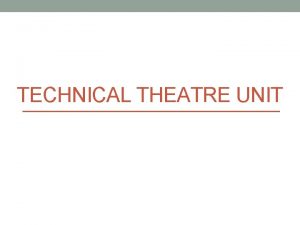Technical English Week 6 Unit 6 Section 1














- Slides: 14

Technical English Week 6: Unit 6 -Section 1 Reading Comprehension Shahrood University of Technology English for Civil Engineering Students 1

Behavior of Beams without Shear Reinforcement • In general, high shear stress on a beam results in the formation of inclined cracks. This is particularly true for beams having only longitudinal reinforcement; that is, reinforcement designed to carry the tensile and compressive normal forces arising from bending moment. English for Civil Engineering Students 2

• In order to prevent the formation of inclined cracks, transverse reinforcement (known as 'shear reinforcement') in the form of closed or V-shaped stirrups is used in the vertical or inclined directions to enclose the main longitudinal reinforcement along the faces of the beam. English for Civil Engineering Students 3

• The following discussion considers the behavior of beams without shear reinforcement and includes the concepts summarized by ACI-ASCE Committee 426. • Inclined cracking in the webs of reinforced or prestressed concrete beams may develop either in the absence of flexural cracks in the vicinity or as an extension of a previously developed flexural crack. English for Civil Engineering Students 4

• An inclined crack occurring in a beam that was previously uncracked due to flexure is known as a web-shear crack, as shown in Figure 6. 1. a. An inclined crack originating at the top of and becoming an extension to a previously existing flexural crack is known as a flexural-shear crack, as shown in Figure 6. 1. b. The critical flexural crack is referred to as the 'initiating crack. ' English for Civil Engineering Students 5

English for Civil Engineering Students 6

• Web-shear cracks are relatively rare, particularly in nonprestressed beams. These cracks occur in thin-webbed I-shaped beams having relatively large flanges, common only in prestressed concrete construction. Web-shear cracks may also occur near the inflection points or bar cutoff points on continuous reinforced concrete beams subjected to axial tension. English for Civil Engineering Students 7

• Flexure-shear cracks are the usual type found in both reinforced and prestressed concrete. In nonprestressed reinforced concrete beams, flexural cracking is expected under service load. The flexural cracks, usually extending approximately vertically into the beam, cause no distress to the beam until a critical combination of flexural and shear stresses develops near the interior extremity of one of the cracks. English for Civil Engineering Students 8

• The inclined crack then forms. The rate of transformation of the initiating flexural crack into the flexure-shear crack depends on the rate of growth and height of flexural cracks, as well as the magnitude of shear stresses acting near the tops of flexural cracks. English for Civil Engineering Students 9

• The transfer of shear in reinforced concrete members occurs by a combination of the following mechanisms, as shown in Figure 6. 2. English for Civil Engineering Students 10

English for Civil Engineering Students 11

• The ability of a beam to achieve a higher capacity after an inclined crack has formed depends on whether or not the portion of shear formerly carried by uncracked concrete can be redistributed across the inclined crack. The mechanisms (a)through (d) mentioned below all participate in the redistribution, the success of which determines the shear capacity and the degree of seriousness of the crack formation. English for Civil Engineering Students 12

– (a) Shear resistance of the uncracked concrete, Vcz. – (b) Aggregate interlock (or interface shear transfer) force Va , tangentially along a crack, and similar to a frictional force due to irregular interlocking of the aggregates along the rough concrete surface on each side of the crack. – (c) Dowel action, Vd, the resistance of the longitudinal reinforcement to a transverse force. – (d) Arch action on relatively deep beams. – (e) Shear reinforcement resistance, Vs, from vertical or inclined stirrups (not available in beams without shear reinforcement). English for Civil Engineering Students 13

• For rectangular beams without shear reinforcement, it is reported that after an inclined crack has formed, the proportion of the shear transferred by the various mechanisms is as follows: 15 to 25% by dowel action; 20 to 40% by the uncracked concrete compression zone; and 33 to 50% by aggregate interlock or interface shear transfer. – Wang, C. K. & Salmon, C. G. (1979). Reinforced Concrete Design. Harper & Row Publishers. pp 114. English for Civil Engineering Students 14
 Week by week plans for documenting children's development
Week by week plans for documenting children's development English unit conversions
English unit conversions English 5 quarter 4 week 6
English 5 quarter 4 week 6 English 9 quarter 2 week 3
English 9 quarter 2 week 3 English week
English week English week objectives
English week objectives Unit 6 review questions
Unit 6 review questions List of things a to z
List of things a to z My sidewalks level b unit 2 week 5 fluency sentences
My sidewalks level b unit 2 week 5 fluency sentences Unit 3 week 4 vocabulary
Unit 3 week 4 vocabulary Asd ste
Asd ste Technical communication
Technical communication Section
Section Unit 4 common specialist technical principles answers
Unit 4 common specialist technical principles answers Speak theme
Speak theme


























